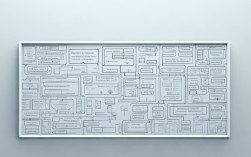The Art of Leaps: Mastering Latent Thinking in English

I. Introduction: Why Embrace Linguistic Acrobatics?
Thinking isn't always a straight line from A to B. Often, our minds dart like hummingbirds – rapid shifts between ideas, unexpected connections sparking insight. This inherent cognitive quality is latent thinking (潜思), and capturing its dynamism effectively requires more than just basic sentence structures. Expressing "思维跳跃" in English demands specific techniques that convey discontinuity, association, and non-linear logic while maintaining coherence for the reader/listener. Mastering this transforms flat narratives into vibrant mental journeys. Let's explore how to achieve this fluency.
II. Core Strategies for Simulating Latent Thinking
| Technique | Description & Example | Effect | Key Phrases/Transitions |
|---|---|---|---|
| Abrupt Paragraph Breaks | End one thought abruptly; start entirely new concept without explicit linker. | Creates visual/rhythmic jolt mimicking mind flickers. | [New section starts immediately] |
| Associative Wordplay | Link concepts through shared sounds, rhymes, or cultural connotations. | Leverages subconscious pattern recognition paths. | "Clouds... like cotton candy thoughts melting away." |
| Ellipsis (...) & Dashes (—) | Signal unspoken leaps or trailing off into implication. | Invites reader to complete the logical gap mentally. | "She remembered Paris... spring rain on cobblestones." |
| Rhetorical Questions Interjections | Pose questions mid-flow, answering them immediately (or not). | Forces momentary pause + redirection of focus. | "What if he’d stayed? No—fate intervened." |
| Fragmented Sentences | Deliberate omission of subjects/objects; rely on context clues. | Mimics speech patterns where ideas rush out half-formed. | "Suddenly realized—keys missing!" ; "Must have left them..." |
| Analogies & Metaphors Sidestepping Literally | Use extended metaphors allowing sudden contextual swaps within the image. | Transports listener fluidly across domains via imagination anchor points. | "Time became a stretchy band, snapping back to noon." |
| Parenthetical Aside Intrusions | Drop casual commentary into main flow disrupting linearity briefly. | Acts as internal monologue peeking through primary argumentation. | "(Though honestly, who believes that?)" inserted after bold claim. |
| Intentional Digression Markers | Employ phrases signaling deliberate departure: "But let's jump ahead..." / "To contrast..." | Acknowledges break while guiding reception of intentional shift. | "Side note: This reminds me of..." returning later. |
| Contrastive Conjunction Umbrellas | Unify disparate elements under overarching opposition themes using however/although etc. | Hold seemingly chaotic elements together through tension resolution framework. | "While scientists measured voltage, poets wrote sonnets about lightning." |
III. Practical Application Examples (From Simple to Complex)
-
Basic Level Punctuation Power: Original Linear Thought: I saw a dog outside. It made me late because I stopped to pet it. Then I ran all the way to school. Leap Version: Round the corner—a scruffy mutt wagging hopelessly! Froze… fingers tangled in fur ten seconds ticked loudly against my backpack. Sprinted—breathless through glass doors just before bell screamed. (Uses dashes, ellipses, fragmentation)
-
Intermediate Level Associative Chain: Topic: Morning Routine → Coffee → Work Deadline → Anxiety → Childhood Memories Example: The kettle shrieked its dawn chorus (again). Steam spiraling upward carried deadlines coiling tighter around my chest—serpentine pressure. Palms sweaty on ceramic mug suddenly transported me back: Grandma’s kitchen radio static fuzzing Jingle Bells at Christmas morning… (Links sensory details across time via sound/touch association)
-
Advanced Level Multilayered Juxtaposition: Concept: Exploring grief through botany metaphor while discussing urban planning failure. Text Excerpt: They paved paradise—asphalt rivers choking dandelion promises pushing through cracks. We edified mourning in concrete cathedrals where pigeons dropped dried petals instead of tears. Growth here bends sideways; roots seek darkness whispering names forgotten by street signs rotted at base… until some kid plants wildflowers defiantly in gridlock soil. (Simultaneously critiques systems AND finds resilience using botanical/architectural imagery collisions)
IV. Common Pitfalls & How to Avoid Them
| Mistake | Symptom | Fix | Example Conversion |
|---|---|---|---|
| Excessive Obscurity | Readers lose thread entirely; feels random noise | Add subtle signposting every 3rd leap max; balance chaos with clarity cues | Instead of chaos → "My notes scattered like confetti falling upside down!" |
| Forced/Unnatural Links | Ideas glued awkwardly where no organic connection exists | Stick to genuine associative pathways even if less frequent; prune forced ones ruthlessly | Remove "...which reminded me how airplanes fly" unless aviation relevant context exists |
| Overreliance on One Device | Only using dashes repeatedly becomes monotonous crutch | Rotate techniques quarterly: paragraph breaks → parentheses → rhetorical Q&A cyclically | Alternate between em dashes — parenthetical asides (this!) — ellipses (...) strategically |
| Neglecting Audience Calibration | Assuming ALL readers grasp obscure references instantly | Match complexity level to reader expertise; explain niche terms briefly first occurrence | For academic paper: define "hermeneutics" early before leaping between interpretations |
V. Exercises to Train Your Latent Muscle
-
Freewrite Prompt: Set timer for 5 minutes. Write continuously about your earliest childhood memory without stopping OR backtracking. Embrace tangent rabbit holes! Goal: volume over quality initially. Later identify natural leap points you created organically. Sample Starter: "That day smelled like rainmixedwithcutgrassandmom’stea..."
-
Rewrite Assignment: Take any boring procedural description (e.g., instructions for changing tires). Inject AT LEAST three latent techniques per paragraph without destroying usability. Challenge yourself to keep essential info intact while adding vitality. Before: "Loosen lug nuts slightly while vehicle remains grounded." After Option: "Jack stands waiting patiently beside sleeping giant—your car—but don’t wake her fully yet! Just nudge those shiny nuts loose... counterclockwise whisper..."
-
Dialogue Practice: Write two characters arguing about something trivial (like pizza toppings). Have their arguments leap wildly between topics using interruptions, false starts, and emotional triggers revealing deeper conflicts beneath surface debate. Record yourself reading aloud to catch rhythm issues. Character A: "Pineapple DOES belong on pizza! It’s sweet sunshine cutting rich sauce gloom!" Character B (interrupting): "Sunshine? You mean tropical delusion! Last time you added fruit... we ended up ordering curry FOR dessert disaster!"
VI. Real-World Masters Showcasing Leaps
- Virginia Woolf (Stream of Consciousness): Her interior monologues in Mrs. Dalloway mirror how thoughts tumble uncontrolled—one moment observing street traffic, next questioning existence itself. She mastered micro-leaps within sentences via italicized interjections (‘What nonsense!’ she thought) followed by stark declarations.
- David Foster Wallace (Postmodern Digressions): Famous for embedding research papers inside novels (Infinite Jest). His footnotes become secondary narratives leaping decades ahead/behind main plot—training readers to hop timelines effortlessly.
- Salman Rushdie (Magic Realism): Seamlessly blends historical events with mythological legends in works like Midnight’s Children. A sentence describing political unrest might suddenly metamorphose into flying carpets carrying protesters skyward—no transition needed beyond authorial confidence.
- Zadie Smith (Urban Poetic Juxtaposition): In White Teeth, she juxtaposes immigrant experiences with pop culture references abruptly: “Archie bought his first polyester suit because Benji Madden wore one on TV last Tuesday.” Single causal link bridges vast cultural chasms instantly.
VII. Key Takeaways Table
| Aspect | Beginner Approach | Advanced Approach | Master Trait |
|---|---|---|---|
| Flow Control | Relies heavily on 'and', 'then' | Mixes fast cuts with slow immersion pacing | Orchestrates rhythm like jazz soloist improvising around theme chords |
| Cohesion Devices | Explicit connectors dominate | Subtle repetition motifs emerge organically | Environmental texture holds fragments together (setting as glue) |
| Voice Consistency | Stays singular/formal | Adopts multiple personas situationally | Maintains recognizable ‘sound fingerprint’ across chaos |
| Purposefulness vs Spontaneity | Overplanned rigidity risks sterility | Embraces happy accidents during drafting | Knows when to harness accident vs when structure serves idea best |
| Reader Trust Building | Must earn right to leap early on | Can occasionally shock without losing follower loyalty | Created universe so compelling readers forgive weirdness willingly |
Q&A Section
Q1: Isn’t using too many leaps confusing for non-native speakers? How do I find balance?
A: Yes—context awareness is key! For ESL audiences or formal documents (legal briefs!), minimize radical shifts until establishing trust through clearer foundations first. Gradually introduce lighter versions: replace heavy fragmentation with well-placed colon/semicolon pauses instead. Example tradeoff: Change “Felt dizzy—room spinning—reached medicine bottle fast!” → “A wave of dizziness washed over me; grasping the medicine bottle quickly became necessary.” Still retains urgency without sacrificing comprehension completely. Always prioritize YOUR audience’s comfort zone above experimental impulses unless creativity is explicitly demanded by genre conventions (poetry permits wilder flights than technical manuals!).
Q2: Can I use “latent thinking” techniques in professional emails/reports? Won’t it seem unprofessional?
A: Absolutely—with strategic restraint! Corporate settings value efficiency communication but suffer from zombie-like dullness syndrome. Injecting moderate leaps humanizes messaging making it memorable without compromising professionalism. Try these safe applications:
- Problem→Solution Gap: Instead of “Issue identified; recommendation follows…” → “Server crashes escalated last Tuesday… Enter stage left: cloud migration proposal.” Added theatrical flair signals proactive mindset positively.
- Data Storytelling Tangents: When presenting stats, briefly personify numbers emotionally: “Q3 sales dived deeper than my diving watch tested during Hawaii vacation…” then return to analysis immediately. Keeps tone light yet authoritative.
- Call to Action Punch: Close proposals dynamically: “Implement Phase One by Friday? Our competitors won’t wait—and neither should we.” Urgency delivered via implied timeline leap beats generic “Please act promptly.” Every time.
Mastering English expressions of latent thinking isn’t about abandoning logic—it’s about honoring how human minds actually work: messy, associative, thrillingly unpredictable. By consciously wielding these techniques, you invite collaborators into your creative process rather than forcing them through rigid tunnels. Start small, experiment bravely, and watch your language liberate ideas previously trapped behind grammatical bars. The world needs more







